Hi, all
This week, we summarized the playtest result from last Saturday at Children’s museum and brainstormed further based on the statistics we have.
Playtest Summarization
During the playtest, we had 5 girls and 5 boys with age range from 6 to 11 and one 14 year old girl, which is mostly close to our demographic.
The playtest consisted of 4 parts: art style, environment, voice and face prototype.
For art style, we tested with a bunch of different characters with different styles. Both boys and girls liked big-eye hilarious characters like Bugs Bunny. For girls, they tended to choose peaceful and friendly characters, but for boys, they would choose cool characters, especially one particular firey creature. All kids had different taste about the characters they don’t like – girls disliked characters that are scary and appear to be dangerous, while boys disliked characters that are “dumb”.
For environments, the most popular choice was the beach, followed by mountain and park. When asked about what is the most secure place you would like to talk, all kids choose their bedroom.
For voice, we prepared 4 different voices: male and female with low and high pitch. The most popular voice is the cartoony one (Tony’s voice) followed by funny male voice (Brian’s voice). All of the kids did not like the low pitched female voice and considered it to be not enthusiastic enough.
The last part of the playtest was our face prototype. We let them play through the whole game. All the kids passed through the game very easily and they all liked our face character, which is a great news for our team. When asked about the questions, all kids answered without feeling weird – one girl even said she loved to take surveys! This aligns with what Dr. Cohen had told us: that kids are not afraid to answer questions. Another thing we noticed is that at the beginning of the game, kids swiped across the tape on the box instead of the tap instruction given by our character. It seemed like children tend to pay more attention to the graphics than to the sound.
We are glad our playtest went well and the results are valuable to us to go on the next stage of our app.
Design
After the analysis of the playtest results, our design team brainstormed a few ideas for our game. One is a collection game, where kids will get decoratable items during answering the questions. At the end, kids can get a customized environment or character. Another is a puzzle game, where kids will get a small puzzle after each question is answered. After solving all the puzzles, kids will get a reward at the end. The third one is an interactive survey, where kids will have different answers, and in order to select one they will fill the area or connecting pieces or some other fun interaction. After compiling these ideas, we brought them to other project rooms for advice. The first idea and the third idea were the most popular choices and we realized that the third idea can be combined with the either of the others easily. Therefore, our design team is now coming up with interactions that we want to have for our second prototype. We designed 3 questions’ interactions and wrote a script, which involves our new sand character and ocean environment. These had swiping and poking mechanisms. We need to test this out in our next playtest to see if children have trouble answering questions and if it feels natural to do so.

Sound
We got the new recordings and gathered/modified different sound effects for our 2nd prototype.
Art
A bunch of assets for our next prototype have been produced, but we’re still trying to figure out the best way to handle animations. Adobe Character Animator seems like it would work really well for us because it makes animating speech really easy, and there is a lot of speech in our game. However, getting that animation and putting it into Unity efficiently has been an issue we are still looking into.
Programming
After we had a vague thought of doing an interactive questionnaire, we slightly modified the original drawing function and make it a special property for certain objects. Basically once you click on such an object, you’ll be able to draw starting from it. In the future, we will make another type of object that can accept/connect with this object. Other than that we also added objects that can be moved around.
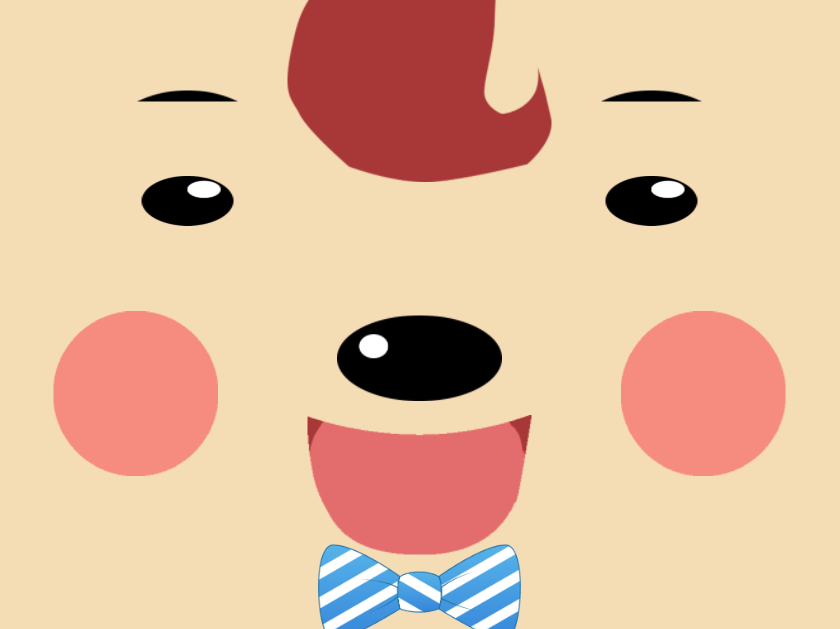
Normal bowtie
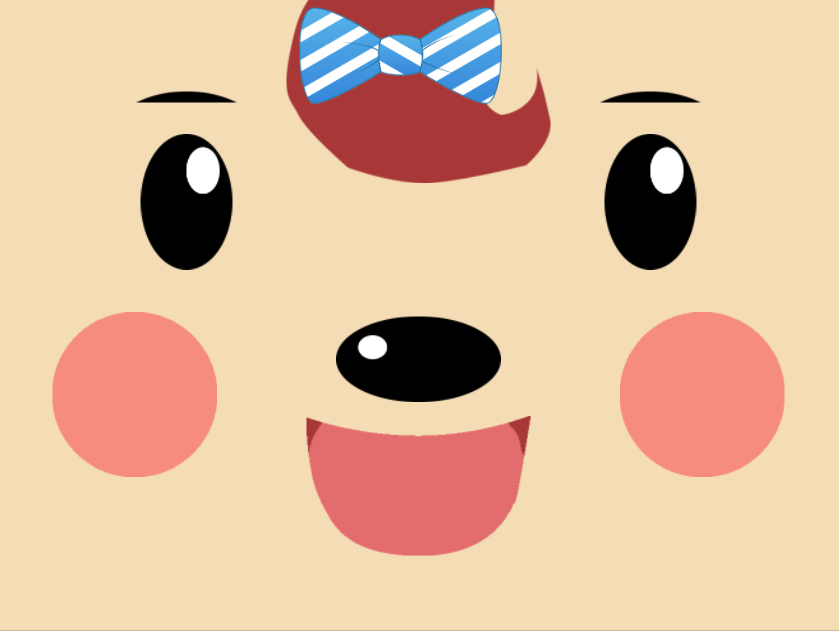
Moved bowtie
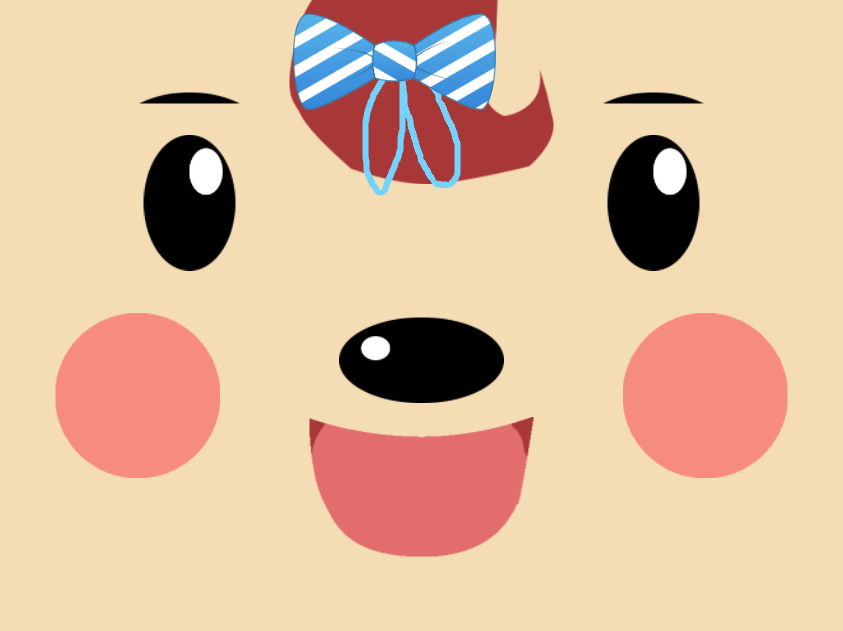
Bowtie Painted
Then we had the detailed version of next prototype design. As one element of the design, we tried and implemented the function to paint a texture with a customized brush. And you can reveal UI elements such as text with your brush.
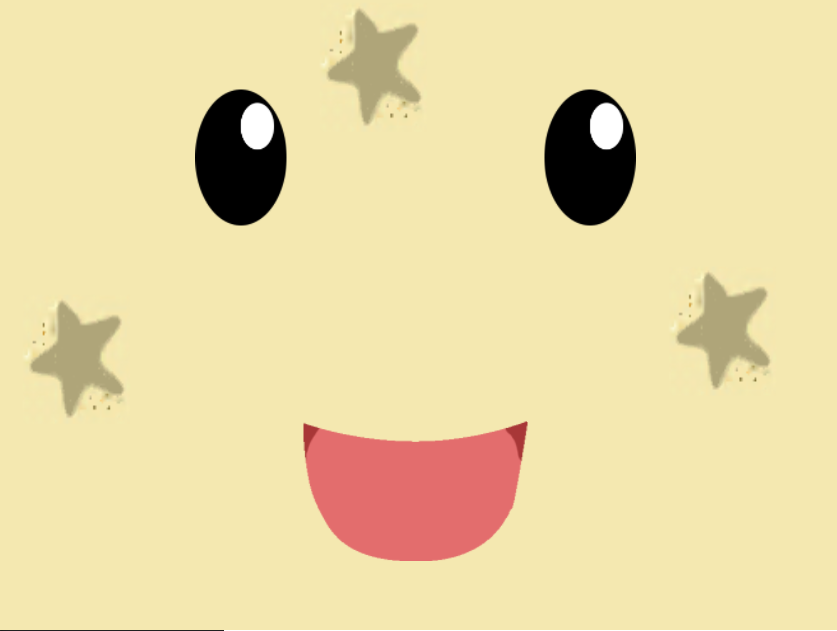
Drawing with a star brush
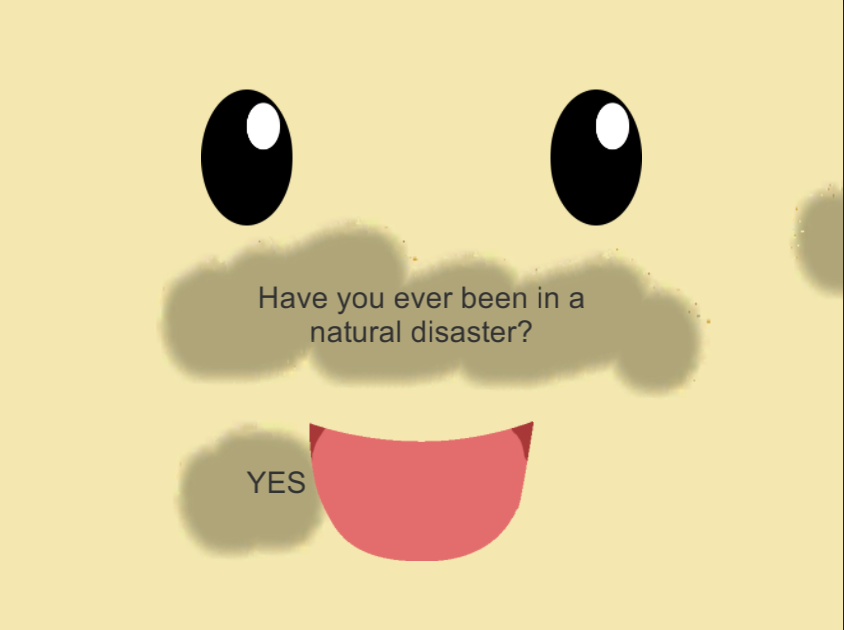
Reveal UI elements with a round brush
This function, however, is quite heavy and performs badly on iPads. We’ll try moving the job to the GPU next week and if that doesn’t work well neither, we will try to find another way.
Additionally, we have implemented a general interactive UI and integrated the first question with animation, but it still needs some debugging.
Production
Our poster is printed out and our stuffed animals have arrived!!!
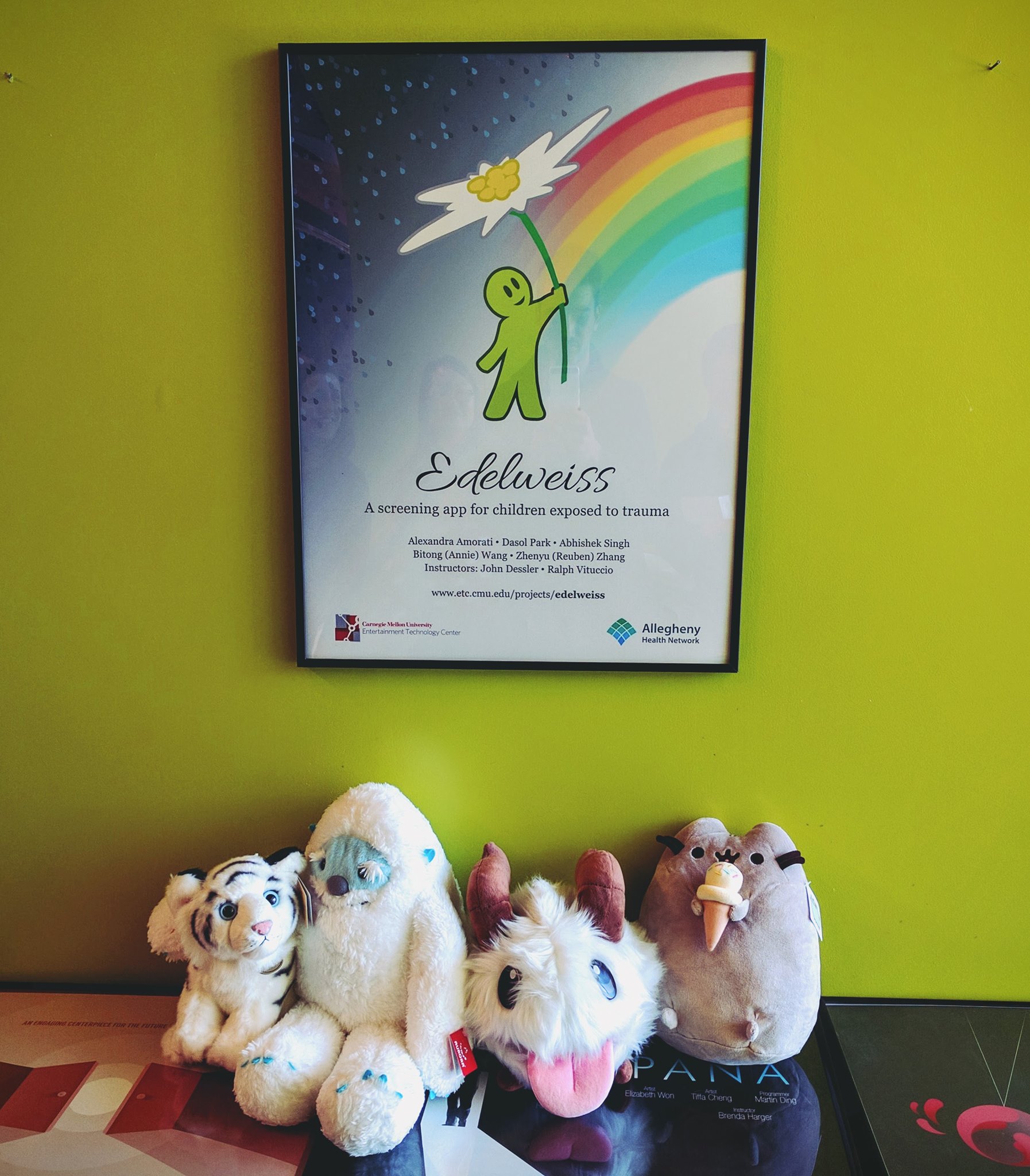
We will soon get some input from a doctor who has worked with therapy apps before, Dr. Saunders. Hopefully, he will be a valuable resource for our design decisions as we start to build our first full prototype.
On Friday, we had our second playtest workshop and which gave us a lot of food for thought and toolsets we hope to use later on. We are looking forward to testing in schools – calmer environments than the Children’s Museum – and as long as we do not include questions about abuse, we do not need to worry about reporting requirements, which was a concern we originally had about testing.

